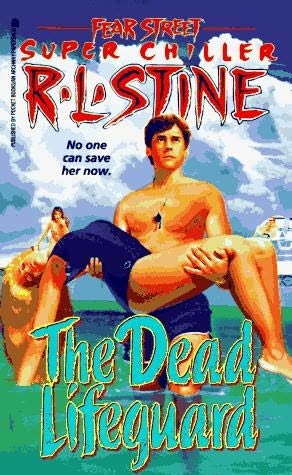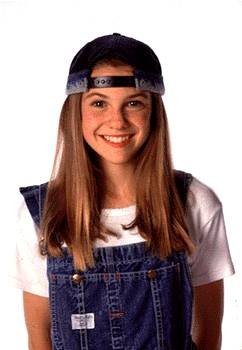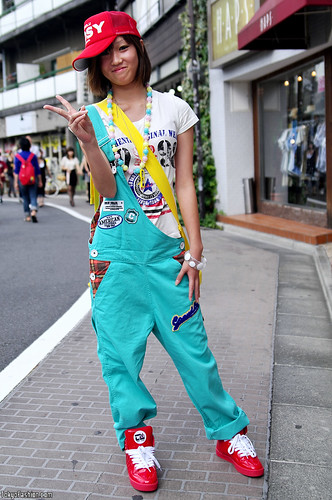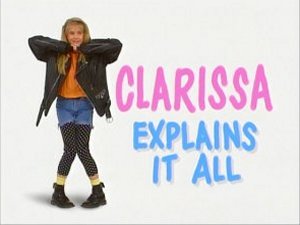What's that old saying? Why write one good book when you can milk a hundred mediocre attempts on the same premise? Something like that. So maybe it doesn't have such resonating wisdom to it, but hey, I don't have a whole team of ghostwriter underlings to do my bidding and come up with something a bit more inspired like the evil geniuses behind franchises like Sweet Valley High.
Admittedly many of our favorite series did indeed come from a single author source, though some of them pulled it off more cunningly than others. I like farfetched plot twists as much as the next person, but things sometimes had a tendency to get out of hands when authors were given the gift of infinite access to the same characters in an unlimited combination of variable situations.
Though the topics and literary value of these series varied significantly from one to the other, they were all legitimate enterprises. Publishers love series for their reliability rather than their quality, and they can certainly get away with a great deal more when dealing with younger and less discerning readers. While some of these series were well-written and twisty plot-filled, others were embarrassingly more juvenile than their intended target audience. Wherever they happen to fall on the quality spectrum, one thing was for sure: book-hungry kids ate this stuff up. Without further ado, a smattering of our most beloved and sometimes inexplicably bestselling young adult series:
Goosebumps

Children's horror series were a lucrative niche genre in the 90s. If you were so imaginatively inclined to be able to think up ridiculous tongue-in-cheek plots that wouldn't stand a chance at being made into a C movie, then you were pretty much golden. Kids went crazy for this stuff. It was sort of scary in an innocent, comical way that kept us coming back for more. Sometimes the concepts were a tad frightening, but the plots were so absurd and twist-filled that it tended to give us more head bumps than goosebumps. From all the facepalming, that is. I do distinctly remember finding the mask and that camp jellyblob thing to be a bit on the nightmare-inducing side, but then again Men in Black gave me nightmares as a kid so maybe you shouldn't take my word for it.
They also had a fair run in television form, featuring this jazzy intro with creepy glowing-eye dog:
Babysitters' Club
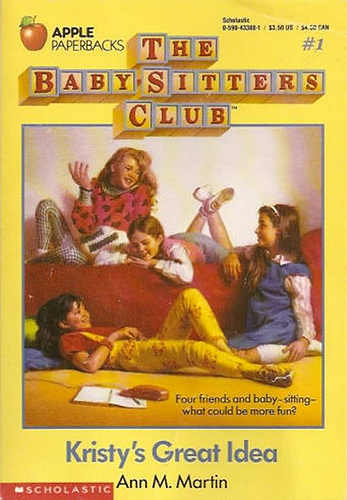
Tween girls were a highly desirable reader demographic in the 90s, particularly as it seemed we were pretty much willing to read anything and everything. I had a rather undying love for the girls of the babysitters' club, remaining fiercely loyal to them even in the face of their complete and total stereotypical ridiculousness. These girls were not exactly three dimensional. They essentially taught me that I could be one of a few character molds: the brassy tomboy, the diabetic fashion model, the California hippie, the shy one, the defiant artistic anti-intellectual Asian one, the nerd, or the black ballerina. I was pretty sure these were my only viable life choice paths once I hit middle school.
The BSC was franchising at its finest, featuring all sorts of additional merchandise, a feature film, and a television series with a theme song that my college friends may or may not have included on a road trip mix. I'll give you a hint: they did.
I owned all of these individual episodes on VHS ordered through the magic of Scholastic book orders. I'll give you a moment to calm your jealousy.
Animorphs
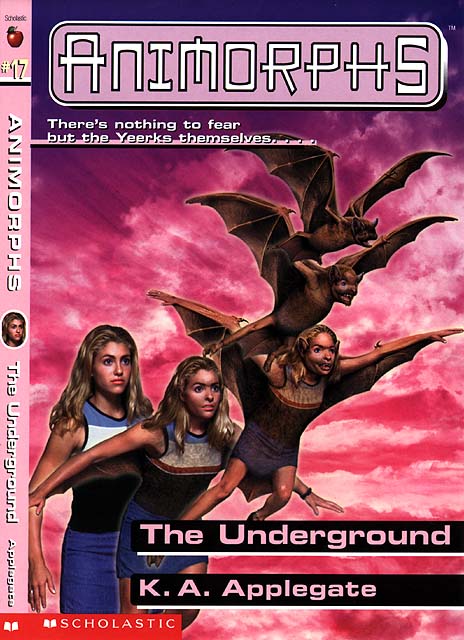
Under closer inspection, it seems that 80s and 90s teen series fell into one of two categories: bitchy preteen girls with growing-up type problems or over-the-top science fiction/horror. That is to say, either incredibly girly or with gory details to appeal to a male demographic. Animorphs fell more into the latter category with its characterization of a group of preteens who had the ability to change into animals in their efforts to quash a secret alien rebel force. Yep, these disgusting outer-space slugs would shimmy into your ear canal and turn you into an alien zombie, but luckily we've got a couple of kids on our side who can morph into housecats.
Animorphs was also granted a short run as a Nickelodeon series:
Fear Street
 What happens to kids when they graduate from Goosebumps? They move on to Fear Street, of course. Goosebumps author RL Stine aged his characters a couple of years, threw in some particularly gory scenes, and made brutal murder an inevitable and unavoidable aspect of any plot. Sounds fun, right? The series is loosely tied together in the same way Goosebumps books were, rarely featuring the same characters but rehashing the same themes book after book. It's tough to say whether these would hold tight with today's kids--if anything, they'd have to suffice as the poor man's Twilight. I'm not too ashamed to admit I had RL Stine sign my well-thumbed copy of Fear Street: The New Girl at a Mall of America booksigning. I did, however, soon thereafter realize I have no patience for mysteries. Sorry, RL.
What happens to kids when they graduate from Goosebumps? They move on to Fear Street, of course. Goosebumps author RL Stine aged his characters a couple of years, threw in some particularly gory scenes, and made brutal murder an inevitable and unavoidable aspect of any plot. Sounds fun, right? The series is loosely tied together in the same way Goosebumps books were, rarely featuring the same characters but rehashing the same themes book after book. It's tough to say whether these would hold tight with today's kids--if anything, they'd have to suffice as the poor man's Twilight. I'm not too ashamed to admit I had RL Stine sign my well-thumbed copy of Fear Street: The New Girl at a Mall of America booksigning. I did, however, soon thereafter realize I have no patience for mysteries. Sorry, RL.Sweet Valley High

These were pretty much my bible growing up, so you can only imagine how shocked I was to find out as an adult just how god-awful they really are. I mean honestly. Jessica and Elizabeth Wakefield were nothing short of my idols as a kid, and now I hear that they're actually insufferable? Who was I to know? I was so entranced and drawn in by the ghostwriters' incredibly repetitive rehashing of their blonde hair, blue-green eyes, California good looks, and perfect size-six figures that I was blinded to the ridiculousness that was their overblown stereotypes of personalities. Jessica (also known as the cool one) was essentially the worst person in the world and Elizabeth (the smart one) made Pollyanna look like Al Capone. And I also learned a valuable lesson: you can tell popular people from nerdy brainiacs by the way they wear their hair. A ponytail is a dead giveaway for being the nerdy twin.
Though these books veered into some pretty outlandish directions (vampires, werewolves, viscount boyfriends), they did manage to keep it toned down for the brief run of the TV-series, which focused mainly on their regular Sweet Valley lives.
I always thought the twins who played the girls on TV were way too slutty-looking to be Jess and Liz. Either way, I totally owned a Sweet Valley High board game and had full collections of Sweet Valley Kids, Sweet Valley Twins, Sweet Valley High, and Sweet Valley University. I imagine that my family singlehandedly supported Francise Pascal's enterprise.
Harry Potter
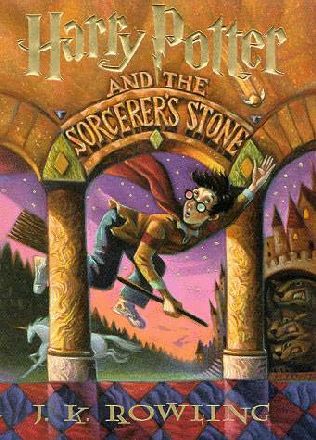
I will no doubt have to better explore Harry Potter in its own full post as it's a legitimate phenomenon in a way few of these others are. I'm also willing to give credit where credit is due and concede the books are far better written and well-conceived than any of the others on this list. In short, Harry Potter made being nerdy cool in its own way. The content was undeniably fantastical and imaginative in a manner compatible with extreme geekiness, yet everyone seemed enthralled by them. Perhaps in the way media like Star Wars gave geeks an outlet of kind of cool make-believe people to admire, Harry Potter managed to simulataneously win readers with nerds and well, everyone else. You'd be pretty hard-pressed to find someone who hasn't at least read one of these books.
Harry Potter is the ultimate money-making franchise, far outliving its rival book series peers. The big-budget fantasy adventure film adaptations don't fare too poorly, either:
Help! I'm Trapped...
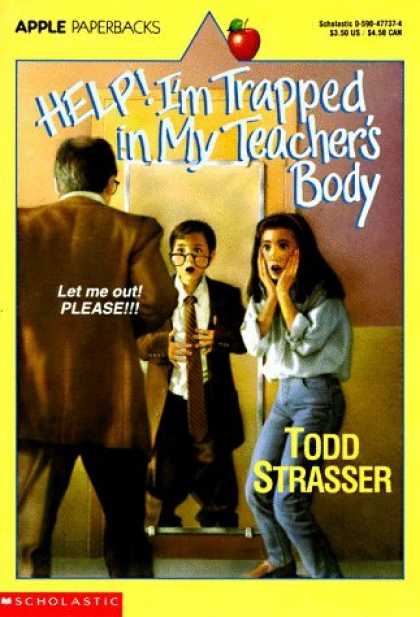
Did you know that you can write 16, count 'em, 16 books that have titles beginning with "Help! I'm Trapped in (insert entrapment device or body here)"? Because you totally can. Todd Strasser made a healthy living off of doing just that, trapping our pals in everything from their teachers' bodies to the first day of doggie obedience school. Actually, we got to go to obedience school twice, so I'm somewhat suspicious that he just ran out of ideas.
By the by, it wouldn't hurt to check out some of these young adult book blogs if the YA series dosage in this post didn't quell your 90s YA book withdrawal. Enjoy!
Dibbly Fresh
Shannon's Sweet Valley Blog
Are You There Youth? It's Me, Nikki

